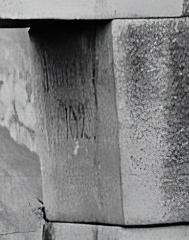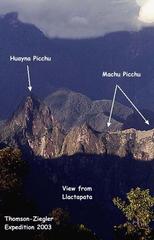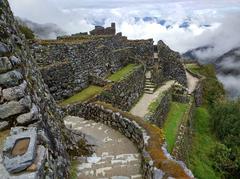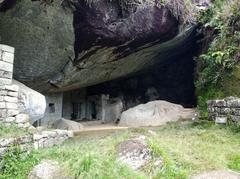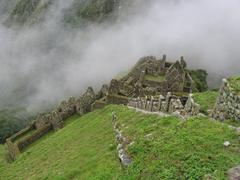
Inca Trail to Machu Picchu: Visiting Hours, Permits, Tickets, and Travel Guide
Date: 04/07/2025
Introduction to the Inca Trail and Machu Picchu
The Inca Trail to Machu Picchu is not just a trek—it’s an immersive journey through one of the world’s most spectacular cultural and natural landscapes. Known locally as Qhapaq Ñan, this ancient network of roads is a testament to Inca ingenuity in engineering, urban planning, and environmental adaptation. Extending from the Sacred Valley to the legendary citadel of Machu Picchu, the trail was constructed in the 15th century under Emperor Pachacuti, serving as both a sacred pilgrimage route and a royal estate. The route and Machu Picchu itself are renowned for their religious, cultural, and astronomical significance (incatrailsinperu.com; machupicchu.org).
This comprehensive guide provides essential information on visiting hours, ticketing, permit acquisition, acclimatization, responsible tourism, and alternative treks. It also highlights key archaeological sites, cultural events, and photographic opportunities. Planning ahead is crucial, as daily permits for the Classic Inca Trail are limited to 500 and must be secured through authorized operators well in advance (incatrailtomachupicchu.com). Whether you’re a history buff, adventure seeker, or cultural explorer, understanding the context and logistics will enrich your journey to this UNESCO World Heritage Site and New Seven Wonder of the World (machupicchu.org; incatrail.org).
Table of Contents
- Origins and Construction of the Inca Trail and Machu Picchu
- Religious and Cultural Significance
- Visiting Hours and Ticket Information
- Booking Tickets and Permits
- Travel Tips and Accessibility
- Nearby Attractions and Accommodation
- Guided Tours and Special Events
- Photographic Spots and Virtual Tours
- Preservation and Rediscovery
- Living Heritage and Oral Traditions
- UNESCO Recognition and Conservation
- Responsible Tourism
- Frequently Asked Questions
- Practical Visitor Information and Alternative Treks
Origins and Construction of the Inca Trail and Machu Picchu
The Inca Trail, or Qhapaq Ñan, is part of an extensive road system spanning over 40,000 kilometers across South America. The section connecting Cusco to Machu Picchu covers approximately 42 kilometers (26 miles) and is famed for its scenic beauty and historical significance (incatrailsinperu.com; incatrailtomachupicchu.com). Built around 1450 CE, Machu Picchu functioned as a royal estate and ceremonial center, supporting 750–1,000 inhabitants, including priests, artisans, and staff (machupicchu.org). Perched at 2,430 meters (7,970 feet), its location provided strategic, agricultural, and spiritual benefits.
Religious and Cultural Significance
The Inca Trail was a sacred pilgrimage route, culminating at Machu Picchu—a site believed to facilitate communion with ancestors and deities (southernperuexplorers.com). Sacred peaks like Huayna Picchu were venerated as apus, or mountain spirits. Many structures are astronomically aligned, such as the Intihuatana stone, which functioned as a solar clock (machupicchu.org).
Visiting Hours and Ticket Information
Machu Picchu: Open daily from 6:00 AM to 5:30 PM, with last entry at 4:00 PM. Timed entry slots and circuits help manage visitor flow (machupicchu.org).
Inca Trail: Hiking usually starts early (around 5:00 AM), with the trek completed in 4 days. The trail is closed every February for maintenance (machupicchu.org).
Tickets: Machu Picchu tickets cost $40–$70 USD for adults, with discounts for students and locals. Inca Trail permits are around $500 USD, including guides and porters. Both must be booked in advance, with Inca Trail permits often selling out 6–12 months ahead (incatrailtomachupicchu.com; Worldly Adventurer).
Booking Tickets and Permits
Permits are available only through authorized Peruvian tour operators; independent trekking is not permitted (Visit Machu Picchu). Permits are non-transferable and require passport details. Notify your operator of any passport changes to avoid entry issues. For peak season (May–September), book at least 6 months in advance (Bigfoot Machu Picchu).
Travel Tips and Accessibility
- Trail Difficulty: Moderate to challenging, with steep ascents and descents. Acclimatize in Cusco (3,400 m) for 2–3 days prior (Tour Leaders Peru).
- Accessibility: Machu Picchu has improved paths for reduced mobility, but the Inca Trail is not suitable for most with mobility impairments.
- Best Season: May–September (dry season). February is closed for maintenance.
- Regulations: No solo trekking; groups must have a licensed guide (max 10 tourists per guide) (Machu Picchu.org).
Nearby Attractions and Accommodation
Cusco, the ancient Inca capital, offers numerous museums and sites (Cusco historical sites). Notable stops along the trail include Patallacta, Runkurakay, Sayacmarca, Phuyupatamarca, Intipata, and Wiñay Wayna (Alpaca Expeditions). Accommodation options range from luxury hotels in Cusco to eco-lodges near the trail—advanced booking is essential in high season.
Guided Tours and Special Events
Guided tours, from day trips to multi-day expeditions, are available from certified operators. Special cultural events, such as Inti Raymi (Festival of the Sun), offer immersive experiences in Cusco.
Photographic Spots and Virtual Tours
Top photo locations include the Sun Gate (Inti Punku), Huayna Picchu, and terraces overlooking the Urubamba River. Virtual tours and 360-degree videos are available for those unable to visit in person (machupicchu.org virtual tours).
Preservation and Rediscovery
Machu Picchu was spared from Spanish discovery, remaining hidden until Hiram Bingham’s 1911 expedition (incatrail.org). Ongoing conservation efforts are supported by strict visitor caps and international partnerships.
Living Heritage and Oral Traditions
Local Quechua communities maintain oral histories and traditions that enrich the visitor experience (southernperuexplorers.com). Engaging respectfully with these communities deepens cultural appreciation.
UNESCO Recognition and Conservation
Machu Picchu was declared a UNESCO World Heritage Site in 1983 and named one of the New Seven Wonders of the World in 2007. The Inca Trail is part of the recognized Qhapaq Ñan road system (2014), emphasizing global importance.
Responsible Tourism
- Environmental Care: Leave no trace, use refillable bottles, avoid single-use plastics (machupicchu.org).
- Porter Welfare: Choose operators who ensure fair wages and proper care (Machu Picchu Tours).
- Support Local Communities: Purchase crafts from artisans, dine locally, and choose responsible companies (Machu Picchu.org).
Frequently Asked Questions (FAQ)
Q: When is the best time to visit?
A: The dry season, May–September, offers the best conditions.
Q: How do I get permits?
A: Book through licensed operators 6–12 months in advance.
Q: Is solo trekking allowed?
A: No, guides are mandatory.
Q: Are there alternatives if permits are sold out?
A: Yes—Salkantay, Lares, Choquequirao, Inca Jungle, Ancascocha, and the Short Inca Trail are popular options.
Q: What should I pack?
A: Sturdy boots, layered clothing, rain gear, water purification, headlamp, first aid kit, passport, and cash.
Practical Visitor Information and Alternative Treks
Alternative Treks Overview
- Salkantay Trek: 5 days, mountain and jungle scenery, fewer crowds.
- Lares Trek: 3–4 days, village immersion, hot springs.
- Choquequirao Trek: 4–9 days, remote Inca ruins.
- Inca Jungle Trek: Multi-sport adventure.
- Ancascocha Trek: 5 days, remote, high-altitude lakes.
- Short Inca Trail: 2 days, ideal for limited time.
Choose based on fitness, interests, and time. All alternatives end at or near Machu Picchu, with train or bus connections from Aguas Calientes (machupicchu.org).
Safety, Health, and Cultural Etiquette
- Acclimatize before trekking to avoid altitude sickness.
- Travel insurance is highly recommended.
- Respect local customs, use basic Spanish or Quechua greetings, and ask permission before photographs.
- Support sustainability and local economies through your choices.
Conclusion and Call to Action
Exploring the Inca Trail and Machu Picchu is a transformative journey through history, culture, and nature. Secure your permits early, respect regulations, and travel responsibly to help preserve these incredible sites. For real-time updates, booking assistance, and expert travel tips, download the Audiala app and follow us on social media. Dive into our related guides on Cusco historical sites, sustainable tourism, and alternative treks to maximize your experience in the Andes.
References and Further Reading
- Complete Guide to Visiting the Inca Trail and Machu Picchu: Tickets, Hours, and History, 2025, Incatrailsinperu.com
- Machu Picchu Historical Tours Experience the Rich History and Culture, 2025, Machupicchu.org
- Inca Trail Trekking Guide: Visiting Hours, Tickets, and Key Historical Sites Near Cusco, 2025, Apus Peru
- Inca Trail Permits, Visiting Hours, and Responsible Tourism Guide for Machu Picchu 2025, 2025, Visit Machu Picchu
- Ultimate Guide to Inca Trail Tickets, Visiting Hours, and Alternative Machu Picchu Treks, 2025, Machupicchu.org
- Machu Picchu History Facts and Visit, 2025, Incatrail.org
- Sustainable Tourism in Machu Picchu, 2025, Machu Picchu Tours
- Hiking the Inca Trail, 2025, Worldly Adventurer
- Inca Trail Permits Availability 2025, 2025, Bigfoot Machu Picchu







